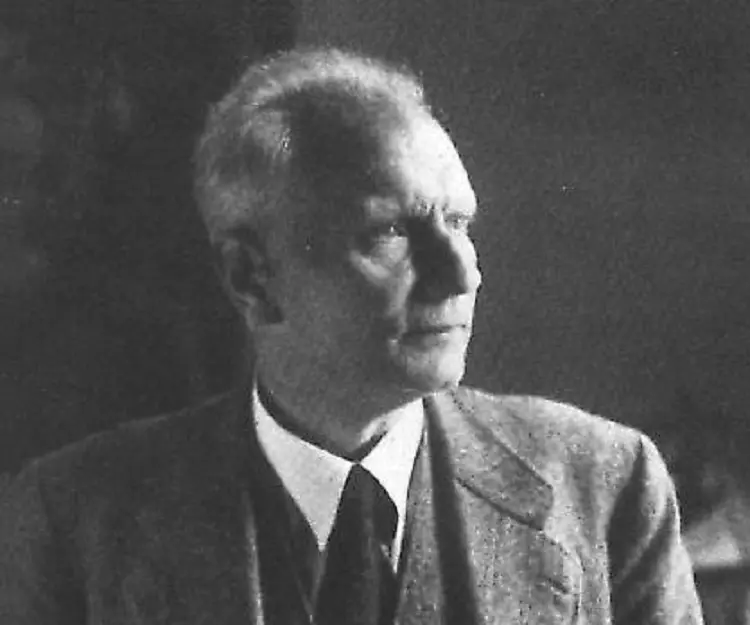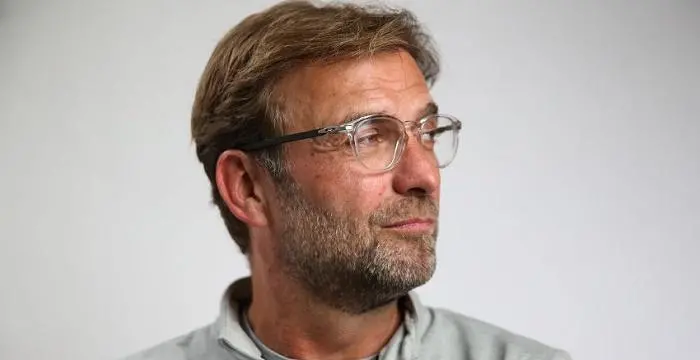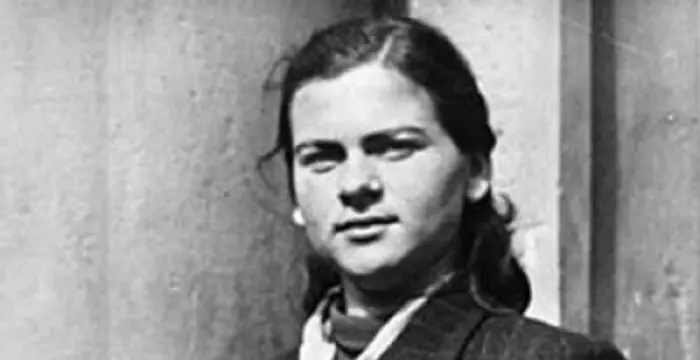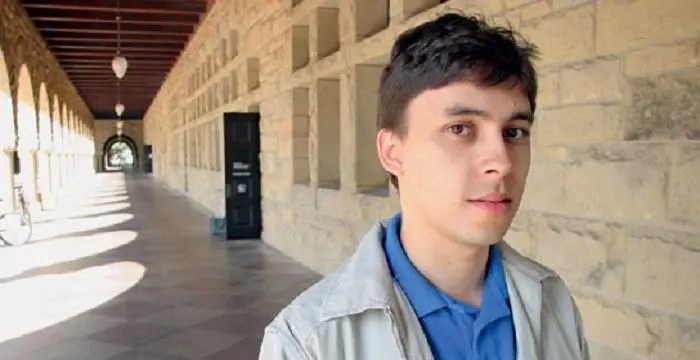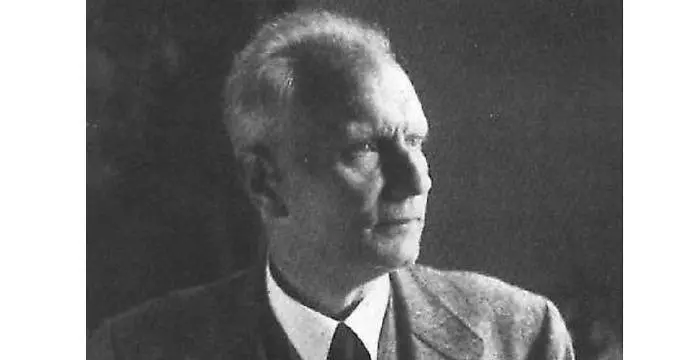
Walter Gerlach - Scientists, Timeline and Childhood
Walter Gerlach's Personal Details
Walter Gerlach was a German physicist who is known for his discovery of spin quantization in a magnetic field
| Information | Detail |
|---|---|
| Birthday | August 1, 1889 |
| Died on | August 10, 1979 |
| Nationality | German |
| Famous | Scientists, Physicists |
| Known as | Герлах, Вальтер |
| Universities |
|
| Birth Place | Biebrich, Rhineland Palatinate |
| Gender | Male |
| Sun Sign | Leo |
| Born in | Biebrich, Rhineland Palatinate |
| Famous as | Physicist |
| Died at Age | 90 |
// Famous Physicists
Henry Cavendish
Henry Cavendish was a theoretical chemist and physicist, renowned for discovery of hydrogen and calculation of the mass of earth. To know more about his childhood, profile, timeline and career read on
Walter Kohn
Nobel Laureate Walter Kohn was an Austrian-born American theoretical chemist and physicist. Check out this biography to know about his childhood, life, achievements, works & timeline.
Nikola Tesla
Nikola Tesla was a Serbian-American inventor, best known for his development of alternating current electrical systems. This biography of Nikola Tesla provides detailed information about his childhood, life, achievements, works & timeline.
Walter Gerlach's photo
Who is Walter Gerlach?
Walther Gerlach was a brilliant nuclear physicist born in late nineteenth century Germany. Educated at the University of Tübingen, he started assisting his PhD advisor even before he received his PhD degree. Later, he received his Habilitation while serving the German army during the World War I. After the war, he joined University of Frankfurt am Main and there along with Otto Stern started working on the deflections of atoms in non-homogeneous magnetic field and co-discovered spin quantization theory, famously known as Stern-Gerlach Effect. Later, he returned to his alma mater and finally joined Ludwig Maximilians University of Munich. Concurrently, he also held many important posts under the Third Reich. After the war he was interned by the Allied forces first in France, then in Belgium and finally in England. After being allowed to return to Germany he first became a visiting professor at the University of Bonn and then was appointed as the Ordinarius Professor of Experimental Physics at the University of Munich. This time too, he concurrently held many prestigious positions and towards the end of his life was awarded with Pour le Mérite by the Federal Government of Germany for his extraordinary achievements.
// Famous Scientists
Juliane Koepcke
Juliane Koepcke is a German-Peruvian biologist, who was the lone survivor among the 92 passengers and crew of the ill-fated LANSA Flight 508 that crashed in the Peruvian rainforest on 24 December 1971. Know more about her life in this biography.
Henry Cavendish
Henry Cavendish was a theoretical chemist and physicist, renowned for discovery of hydrogen and calculation of the mass of earth. To know more about his childhood, profile, timeline and career read on
Konstantin Tsiolkovsky
Konstantin Tsiolkovsky was a Russian rocket scientist and a pioneer of astronautics. This biography provides detailed information about his childhood, family, personal life, career, achievements, etc.
Childhood & Early Life
Walther Gerlach was born on 1 August 1889 at Biebrich am Rhein, now a municipality in the Western Germany. His father, Valentisn Gerlach, was a doctor. His mother’s name was Marie Niederhaeuser.
In 1908, Gerlach enrolled at the Eberhard Karls University of Tübingen. After graduation, he began his doctoral thesis on measurement of radiation in the same university. The eminent German physicist Louis Karl Heinrich Friedrich Paschen was his doctoral advisor. He received his PhD in 1912.
Gerlach next began working for his Habilitation at the University of Tübingen. He had started working as an assistant to Paschen from 1911. In spite of working for Habilitation, he continued assisting Paschen at the laboratory.
However, all these were interrupted as the World War I broke out and Gerlach was inducted into the German Army. He now was assigned to work on wireless telegraphy under Max Wein, the director of the Institute of Physics at the University of Jena.
Later in 1916, he received his Habilitation and became a Privatdozent at the University of Tübingen and then at the Georg-August University of Göttingen. Sometime during the war he also served in the Artillerie-Prüfungs-Kommission (APK) under Rudolf Ladenburg
Career
Gerlach was decommissioned once the war ended in 1918. In 1919, he joined Farbenfabriken Elberfeld as the head of the physics laboratory and worked in that capacity until 1920.
In 1920, he joined the Johann Wolfgang Goethe University in Frankfurt am Main as a teaching assistant and a lecturer. The next year, he was appointed as the Extraordinarius Professor in the Institute of Experimental Physics in the same university.
Some time now, he met Otto Stern, who at the time was working as an assistant in the University’s Institute of Theoretical Physics. Together the two scientists began working on spin quantization.
The first experiment was conducted in 1921, using an electromagnet that enabled the magnetic field to be turned on slowly from a null value. However, in the same year Stern received his first academic post and shifted to University of Rostock. Gerlach stayed behind to complete the experiment.
in 1925, Gerlach left the University of Frankfurt to join University of Tübingen as an Ordinarius Professor. In this, he succeeded his mentor and doctoral advisor Friedrich Paschen.
In 1929, he was invited to join Ludwig Maximilians University of Munich as an Ordinarius Professor. He gladly accepted the post and remained there until 1945.
Meanwhile in 1937, as Germany began to prepare for the World War II Gerlach was inducted in the supervisory board of Kaiser-Wilhelm-Gesellschaft zur Förderung der Wissenschaften (Kaiser Wilhelm Institute of Chemistry), a scientific institute established in 1911. During the reign of Hitler, it began to conduct scientific experiments for the Nazis.
In 1939, he was elected as a Member of the Comerlin working group that dealt in ship degaussing, a process that aimed at reducing or eliminating the magnetic signature of ships. In addition, the committee also dealt in torpedo physics.
In 1944, Gerlach was officially appointed as the head of the physics section of the Reichsforschungsrat (Reich Research Council) and Bevollmächtigter of nuclear physics. In the later capacity he had the plenipotentiary or absolute power.
On May 8, 1945, the German Instrument of Surrender was signed and with that the World War II came to an end in Europe. In the same month, Gerlach along with many other scientists was arrested by the Allied forces under Operation Alsos.
The main intention of his captors was to discover the extent of scientific development of Germany. From May to July 1945, Gerlach was interned first in France and then in Belgium.
Later on July 3, 1945 he and nine other scientists were sent to England and interned until January 3, 1946 in Farm Hall, a bugged house in Godmanchester near Cambridge under Operation Epsilon. It was suspected that these ten scientists had taken part in the development of atomic bomb by Germany.
The primary goal of Operation Epsilon was to determine how close Nazi Germany had been to constructing an atomic bomb by listening to their conversations. Therefore at Farm Hall, the scientists were allowed to talk freely and their conversation was taped by hidden microphones.
Very soon it became clear that Germany did not have any atomic bomb and therefore in January 1946, Gerlach was set free. He then returned to Germany and became a visiting professor at the University of Bonn.
In 1948, he was appointed as an Ordinarius Professor of Experimental Physics at the University of Munich. Simultaneously, he also became the Director of the Physics Department and held the position until 1957. In addition, he also served as the Rector of the University from 1948 to 1951.
Concurrently, Gerlach also held many prestigious positions. In 1949, he became the founding president of the Fraunhofer-Gesellschaft, an institute established for promotion of applied sciences and held that position till 1951.
Also in 1949, Gerlach became the vice-president of the Deutsche Gemeinschaft zur Erhaltung und Förderung der Forschung (German Association for the Support and Advancement of Scientific Research). He held the position until 1961.
In 1957, Gerlach signed Göttingen Manifesto along with seventeen other leading nuclear scientists from Germany. Through this declaration they vouched not to arm the Federal Republic of Germany with atomic weapons.
Major Works
Gerlach is best known for the Stern–Gerlach experiment of 1922. The experiment was jointly carried on with Otto Stern. They sent silver atoms through a non-uniform magnetic field. The deflected atoms hit a glass plate and split into two beams. The result of this experiment was published in ‘Zeitschrift für Physik’, German scientific journal.
In addition, Gerlach had also made significant contributions in the fields of radiation, spectroscopy and quantum theory.
Awards & Achievements
In 1970, Walther Gerlach received Pour le Mérite for his contribution to Physics. It is one of the highest Order of Merit conferred by the Government of Germany in recognition of extraordinary personal achievement.
Death & Legacy
Gerlach died on 10 August 1979 in Munich.
Although the spin quantum theory has greatly advanced from the time he discovered it, he is still remembered as one of the authors of ‘Stern-Gerlach Effect’. His work in this direction was first to confirm the spin quantization theory experimentally. More than that, it paved the way for further development of modern physics.
Trivia
Although Otto Stern received the 1943 Nobel Prize in Physics the citation did not mention the ‘Stern-Gerlach Effect’. That was done mainly to deprive Gerlach of any credit because he had continued to work in the Nazi Germany.
// Famous Leo Celebrities peoples
Eugenia Cooney
Check out all that you wanted to know about Eugenia Cooney, the famous American Vlogger & YouTube Personality; her birthday, her family and personal life, her boyfriends, fun trivia facts and more.
Princess D
Princess D (Destiny Indira Cox) is an American rapper, dancer and social media personality. Let’s have a look at her family and personal life including age, birthday, net worth, and fun facts.
Payton Moormeier
Payton Moormeier is an American social-media personality best known for his musical.ly videos. Check out this family, personal life, etc.
Walter Gerlach biography timelines
- // 1st Aug 1889Walther Gerlach was born on 1 August 1889 at Biebrich am Rhein, now a municipality in the Western Germany. His father, Valentisn Gerlach, was a doctor. His mother’s name was Marie Niederhaeuser.
- // 1908 To 1912In 1908, Gerlach enrolled at the Eberhard Karls University of Tübingen. After graduation, he began his doctoral thesis on measurement of radiation in the same university. The eminent German physicist Louis Karl Heinrich Friedrich Paschen was his doctoral advisor. He received his PhD in 1912.
- // 1911Gerlach next began working for his Habilitation at the University of Tübingen. He had started working as an assistant to Paschen from 1911. In spite of working for Habilitation, he continued assisting Paschen at the laboratory.
- // 1911 To 1937Meanwhile in 1937, as Germany began to prepare for the World War II Gerlach was inducted in the supervisory board of Kaiser-Wilhelm-Gesellschaft zur Förderung der Wissenschaften (Kaiser Wilhelm Institute of Chemistry), a scientific institute established in 1911. During the reign of Hitler, it began to conduct scientific experiments for the Nazis.
- // 1916Later in 1916, he received his Habilitation and became a Privatdozent at the University of Tübingen and then at the Georg-August University of Göttingen. Sometime during the war he also served in the Artillerie-Prüfungs-Kommission (APK) under Rudolf Ladenburg
- // 1920In 1920, he joined the Johann Wolfgang Goethe University in Frankfurt am Main as a teaching assistant and a lecturer. The next year, he was appointed as the Extraordinarius Professor in the Institute of Experimental Physics in the same university.
- // 1921The first experiment was conducted in 1921, using an electromagnet that enabled the magnetic field to be turned on slowly from a null value. However, in the same year Stern received his first academic post and shifted to University of Rostock. Gerlach stayed behind to complete the experiment.
- // 1922Gerlach is best known for the Stern–Gerlach experiment of 1922. The experiment was jointly carried on with Otto Stern. They sent silver atoms through a non-uniform magnetic field. The deflected atoms hit a glass plate and split into two beams. The result of this experiment was published in ‘Zeitschrift für Physik’, German scientific journal.
- // 1925in 1925, Gerlach left the University of Frankfurt to join University of Tübingen as an Ordinarius Professor. In this, he succeeded his mentor and doctoral advisor Friedrich Paschen.
- // 1929 To 1945In 1929, he was invited to join Ludwig Maximilians University of Munich as an Ordinarius Professor. He gladly accepted the post and remained there until 1945.
- // 1939In 1939, he was elected as a Member of the Comerlin working group that dealt in ship degaussing, a process that aimed at reducing or eliminating the magnetic signature of ships. In addition, the committee also dealt in torpedo physics.
- // 1943Although Otto Stern received the 1943 Nobel Prize in Physics the citation did not mention the ‘Stern-Gerlach Effect’. That was done mainly to deprive Gerlach of any credit because he had continued to work in the Nazi Germany.
- // 1944In 1944, Gerlach was officially appointed as the head of the physics section of the Reichsforschungsrat (Reich Research Council) and Bevollmächtigter of nuclear physics. In the later capacity he had the plenipotentiary or absolute power.
- // 8th May 1945On May 8, 1945, the German Instrument of Surrender was signed and with that the World War II came to an end in Europe. In the same month, Gerlach along with many other scientists was arrested by the Allied forces under Operation Alsos.
- // Jul 1945The main intention of his captors was to discover the extent of scientific development of Germany. From May to July 1945, Gerlach was interned first in France and then in Belgium.
- // 3rd Jul 1945 To 3rd Jan 1946Later on July 3, 1945 he and nine other scientists were sent to England and interned until January 3, 1946 in Farm Hall, a bugged house in Godmanchester near Cambridge under Operation Epsilon. It was suspected that these ten scientists had taken part in the development of atomic bomb by Germany.
- // Jan 1946Very soon it became clear that Germany did not have any atomic bomb and therefore in January 1946, Gerlach was set free. He then returned to Germany and became a visiting professor at the University of Bonn.
- // 1949 To 1951Concurrently, Gerlach also held many prestigious positions. In 1949, he became the founding president of the Fraunhofer-Gesellschaft, an institute established for promotion of applied sciences and held that position till 1951.
- // 1949 To 1961Also in 1949, Gerlach became the vice-president of the Deutsche Gemeinschaft zur Erhaltung und Förderung der Forschung (German Association for the Support and Advancement of Scientific Research). He held the position until 1961.
- // 1957In 1957, Gerlach signed Göttingen Manifesto along with seventeen other leading nuclear scientists from Germany. Through this declaration they vouched not to arm the Federal Republic of Germany with atomic weapons.
- // 1970In 1970, Walther Gerlach received Pour le Mérite for his contribution to Physics. It is one of the highest Order of Merit conferred by the Government of Germany in recognition of extraordinary personal achievement.
- // 10th Aug 1979Gerlach died on 10 August 1979 in Munich.
// Famous German peoples
Jordan Carver
Jordan Carver is a famous German model. Let’s take a close look at her personal life, including her age, career, net worth, achievements and some fun facts.
Jürgen Klopp
Jürgen Klopp is a German football manager, and a former professional football player. Check out this biography to know more about his childhood, family, personal life, etc.
Irma Grese
Irma Grese was a notorious German Nazi concentration camp guard during the Second World War. This biography profiles her childhood, life, horrifying acts, death and other facts.
Juliane Koepcke
Juliane Koepcke is a German-Peruvian biologist, who was the lone survivor among the 92 passengers and crew of the ill-fated LANSA Flight 508 that crashed in the Peruvian rainforest on 24 December 1971. Know more about her life in this biography.
Jawed Karim
Jawed Karim is a German-American internet entrepreneur, technologist and co-founder of the video-sharing website, YouTube. Check out this biography to know about his childhood, family, personal life, achievements, age, etc.
Charles Bukowski
Charles Bukowski was a German-born American novelist, short story writer and poet. With this biography, learn in details about his childhood, life, works, career and timeline
Walter Gerlach's FAQ
What is Walter Gerlach birthday?
Walter Gerlach was born at 1889-08-01
When was Walter Gerlach died?
Walter Gerlach was died at 1979-08-10
Where was Walter Gerlach died?
Walter Gerlach was died in Munich
Which age was Walter Gerlach died?
Walter Gerlach was died at age 90
Where is Walter Gerlach's birth place?
Walter Gerlach was born in Biebrich, Rhineland Palatinate
What is Walter Gerlach nationalities?
Walter Gerlach's nationalities is German
What was Walter Gerlach universities?
Walter Gerlach studied at University of Tübingen
What is Walter Gerlach's sun sign?
Walter Gerlach is Leo
How famous is Walter Gerlach?
Walter Gerlach is famouse as Physicist



